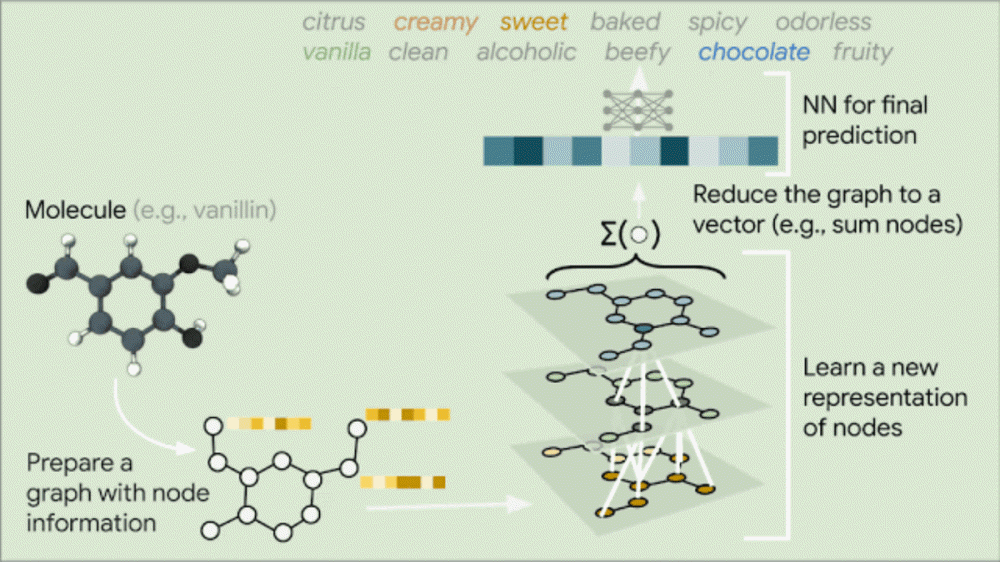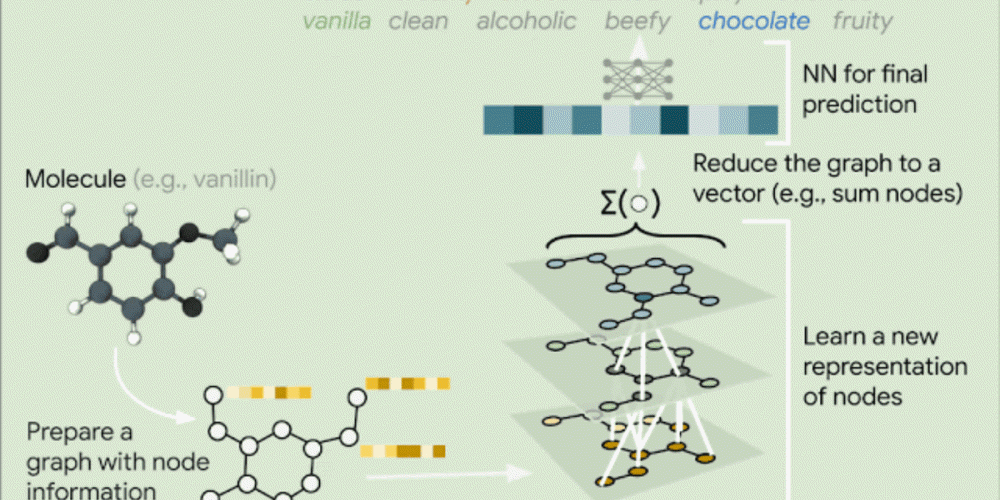
Google announced that it has developed an AI that predicts odor by analyzing the molecular structure that causes odor.
In the human sense of smell, 400 types of olfactory receptors in the mucous membrane of the nostrils act as sensors. Olfactory receptors are activated upon binding to specific molecular structures, firing the olfactory nerve OSN. The fired OSN is a structure that sends signals from the olfactory bulb of the brain, and the posterior bulb that receives it sends signals to various parts of the brain for political processing. Therefore, the Google research team believes that even if the sense of smell itself is not reproduced, AI can smell and share the smell if it can detect the odor molecules that cause the smell.
For AI to learn odors, it is important to tag the types of odor molecules and what kind of smell they are. The Google research team created a dataset of 5,000 molecules identified as perfumes and labeled each molecular odor. For example, a substance called vanillin, extracted from vanilla, is known to cause a sweet smell like vanilla ice cream, and becomes a set with a sweet smell like vanilla, cream, chocolate.
AI must use graph neural network GNN to interpret the structure of odor molecules at the atomic level. Specifically, it is said to analyze the relationship between the number of carbons and hydrogens in the molecule in multiple layers and confirm the structure of the odor molecule. And by learning GNN using two-thirds of the dataset, AI can predict molecular odors based on molecular structure.
However, there are parts that have not been elucidated about the science of smell. For example, D-limonene, which is a citrus odor component, and L-limonene, which is a mint and spearmint odor component, is an optical isomer with a symmetrical molecular structure, and although their odors are completely different, the structures are quite similar. The mechanism by which the human sense of smell is responsible for and divides optical isomers such as D-limonene and L-limonene is not well known. Additional training is required for AI to be able to precisely determine the odor molecules of optical isomers.
The research that Google’s team will share in AI smelling and sharing is likely in the future, such as designing new scent molecules that can be produced inexpensively, digitizing scents, and creating opportunities for people who lose their sense of smell to someday feel the smell of roses and rotten eggs. In the end, he revealed that he wants to evoke odor problems in the field of machine learning by sharing high-quality open data sets. Related information can be found here .


















Add comment